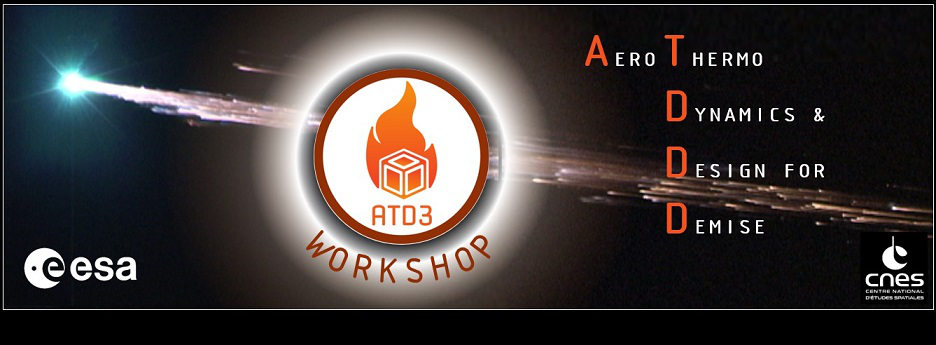Speaker
Description
The present study aims at proposing a methodology for coupling the non-equilibrium modelling solver(NEMO) of open source CFD software SU2 Multiphysics with the open source ablation solver Porous material Analysis Toolbox(PATO). SU2-NEMO solves Navier Stokes equations with thermochemical non-equilibrium effects by using finite volume method. Surface heat flux and pressure distribution of ablating wall is obtained from SU2-NEMO and it is used as input of ablation analysis. PATO, as a fully portable OpenFOAM library, discretizes conversation equations of total energy, gas momentum, gas mass, solid mass and gas species equations by finite volume method. As a boundary condition, PATO defines the convective heat flux with the formula $q_{conv}=u_e\rho_eC_h(h_r-h_w)$ where $u_e$ and $\rho_e$ are boundary layer edge velocity and density properties, $C_h$ is Stanton number, $h_r$ and $h_w$ represent recovery and wall enthalpy respectively. Therefore, to apply convective heat flux to the ablative surface, two different boundary conditions should be defined: multiplication of $u_e\rho_eC_h$ and recovery enthalpy($h_r$). Due to aerothermal design concerns, computational efficiency is significant for the coupling methodology. So that instead of estimating the boundary layer edge properties from CFD results of SU2-NEMO, which is computationally ineffective, shock relations are used for calculating $u_e$ and $\rho_e$ and recovery temperature formula is used for the calculation of $h_r$. Since $h_w$ is given as initial condition($c_pT_w$), $C_h$ can be calculated by using surface heat flux results. By using these boundary conditions PATO gives the outputs of surface temperature and recession which are used as inputs of SU2-NEMO for CFD analysis. This coupling methodology presents an effective way to investigate the effect of surface recession to the surface heat flux distribution of blunt nose geometries by using two open source solvers.

